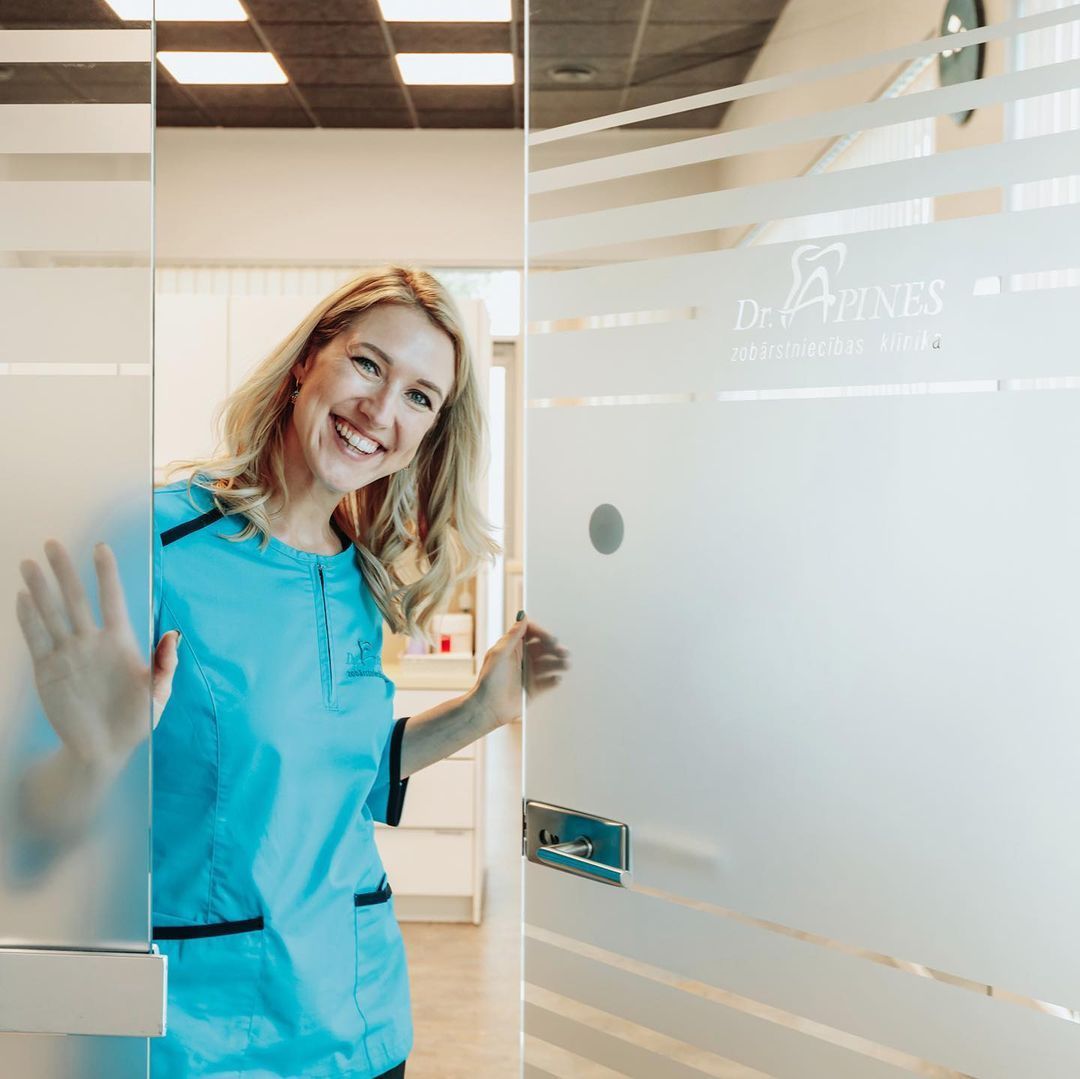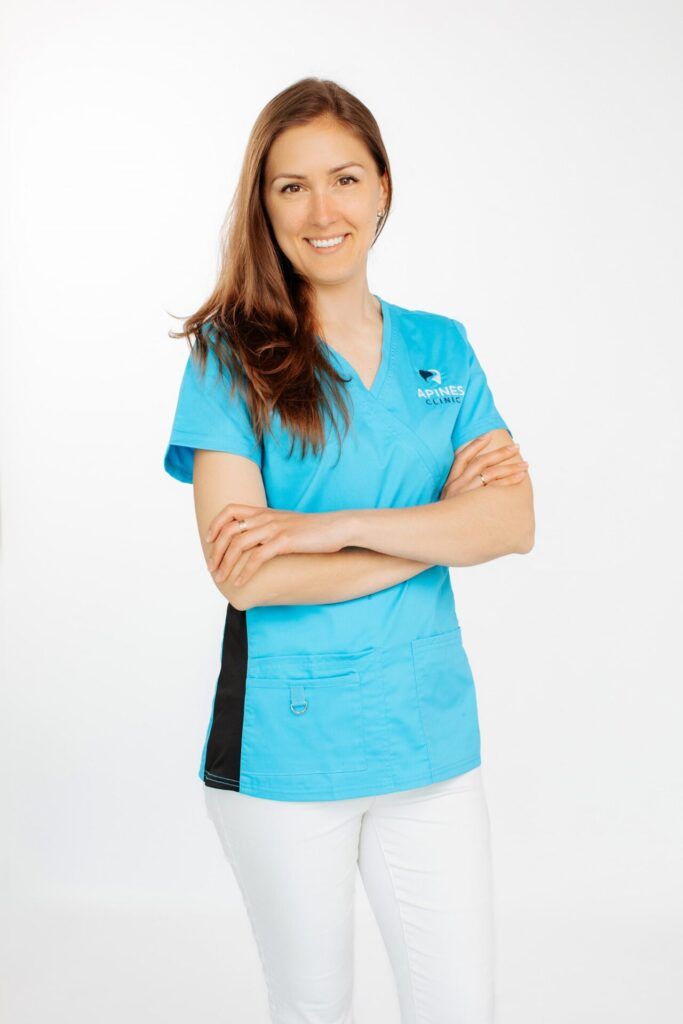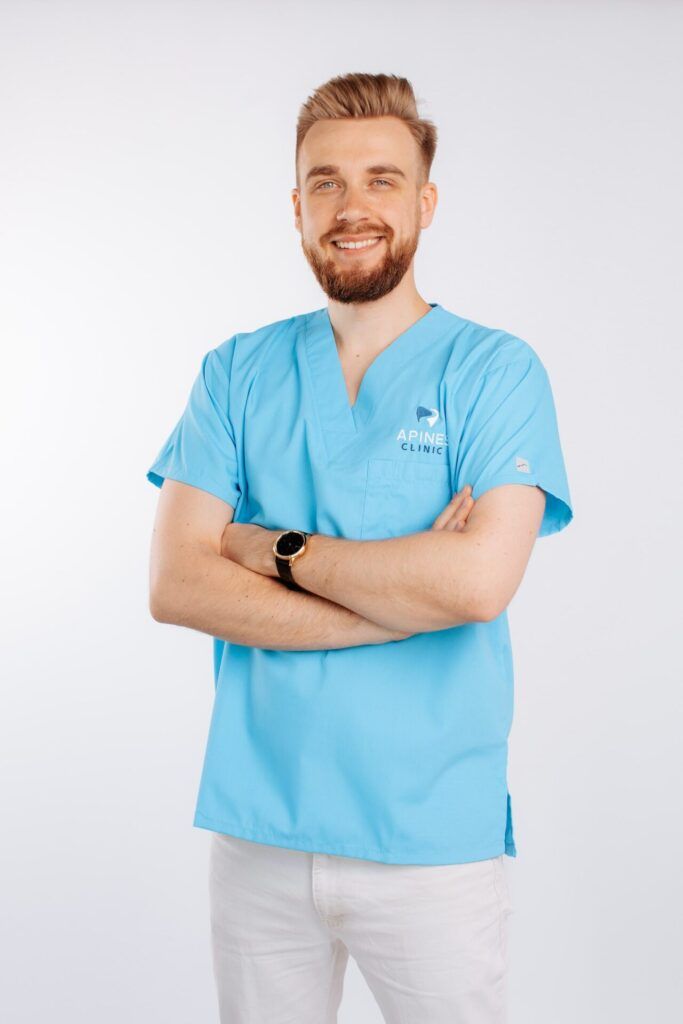
Dental veneers

Until 31.07.2024, we offer a free consultation on the aesthetic improvement of Your smile with dental veneers and crowns.
Dental veneers, also called porcelain laminates, are one of the most common ways to restore teeth, significantly improving the aesthetics of the front teeth and the visual appearance of the smile. Veneers are made individually for each patient in the laboratory – porcelain laminates are made with the chosen tooth colour, size, length, and shape. The finished veneers are bonded to the front surface of the tooth using special cement.
Modern technologies make it possible to manufacture such a thin layer of ceramics that the patient’s natural tooth tissue can be preserved almost entirely and only a minimal layer of the tooth can be slightly removed, or the tooth even does not need to be shaved.
Types of dental veneers
Veneers are mainly made from ceramics, as this material is best suited for dental purposes.
- Ceramics are very durable and can reflect light almost like a natural tooth. However, there are alternative, more cost-effective composite veneers that can be manufactured either in the clinic or separately in a laboratory.
- Composite laminatesare less durable and not as aesthetically impeccable, and their colour may change over time.
Who should get dental veneers?
Dental veneers are used to improve the teeth aesthetics so that a person’s smile looks naturally beautiful, white, and harmonious. These are the main reasons why many people choose dental veneers:
- enamel discolouration;
- one or several front teeth that are non-vital and darkened;
- tremas or gaps between teeth;
- short and chipped teeth;
- inaesthetic fillings;
- fractures and cracks in the area of the front teeth;
- peg teeth – thin, small, with a pointed crown;
- overcrowding of teeth that you can’t or don’t want to correct with orthodontics.
9 advantages of veneers
What will be the result?
If you dream of an ultra-white smile, it is necessary to estimate how many veneers need to be made to make your whole smile line harmonious (this may require 10 veneers for your front teeth). If you decide not to have veneers placed on your lower front teeth, then your teeth may have to be whitened before veneers are made.
But if you decide to have veneers placed on a few front teeth only, the veneers will be matched to the tone and shape of the other teeth.
Plan your smile – evaluate the result before the work has started
- Teeth are precisely scanned using the 3Shape Trios intraoral scanner and presented digitally
- Photos of the smile and intraoral photos are taken
- Shape/colour/length of new teeth can be planned using the Smile Design software
- The result can be assessed digitally on the photos or printed on a 3D printer and tried on using a special mould
- Accept the result and start treatment, if necessary, making corrections and improvements to the new teeth before the work begins
How are veneers bonded?
Consultation and preparation of a treatment plan;
Treatment, if necessary (e.g., replacement of existing fillings);
Trying on the smile (planning the shape of the veneers);
Whitening, if necessary;
Shaving, moulding, temporary restoration;
Fitting;
Cementation and the result.
Restoration process
Veneer placement continues in the prosthodontist’s office and the next step is teeth shaving. This is necessary to prepare the surface of the tooth for the veneer. The procedure is performed under local anaesthesia, so it is completely painless. If the patient needs more than one tooth shaved, the dentist can use laughing gas or intravenous sedation to ensure maximum comfort to the patient.
The patient can try on ready veneers in the next stage. If the patient is satisfied with the result, the veneers can be cemented during the next visit, and the dental restoration procedure will be completed. If a correction is required, the veneers are only tried on. This can be done as many times as necessary until the patient is completely satisfied with the result.
In general, three visits to the dental clinic are normally required to have veneers bonded. It may also take longer, especially if the patient needs dental treatment or teeth whitening.
You won’t go without your teeth for a second! Temporary veneers are provided at once.
How to take care for veneers?
Dental veneers are custom-made for each patient so that they can be used like own teeth. The care of veneers is no different from the care of natural teeth – they should be cleaned with a soft brush and floss, you also have to go on regular appointments to a dental hygienist.
Whom to trust for dental veneer instalation?
Dr. Apine’s Dental Clinic employs several experienced dental prosthetists who can provide high-quality aesthetic restoration of teeth with dental veneers. The dental prosthetist makes a diagnosis and offers the most suitable treatment for the patient, considering the patient’s wishes, needs and possibilities.
How much do dental veneers cost?
The cost of veneers depends on the number of laminates needed.
One patient may need one veneer, another may need a full dental arch, so the cost of veneers can be calculated after a consultation with the dentist and an examination. It is important to understand that the following parameters should also be added to the cost:
- dental X-ray examination (we recommend 3D imaging to rule out tooth root abnormalities);
- possible replacement of old fillings to rule out the risk of hidden caries;
- dental scans, photographs of the teeth and digital or mould visualisation.
It is important to go through all the preparation steps if you want the new veneers to be pleasing to the eye and to serve you for a long time without any worries. If veneers are made for someone grinding teeth in their sleep, we recommend including an overnight mouth guard in the price of the veneers – it will protect the new teeth and prolong the functionality of the veneers.
Dental veneers
Consultation of a prosthodontics
Porcelain veneer
4 veneers for front teeth
Entire smile line with 10 veneers
Dental services are paid in installments
After filling out the form, we will contact you within 1 working day and specify the appointment time.
We will contact you within 1 working day.















